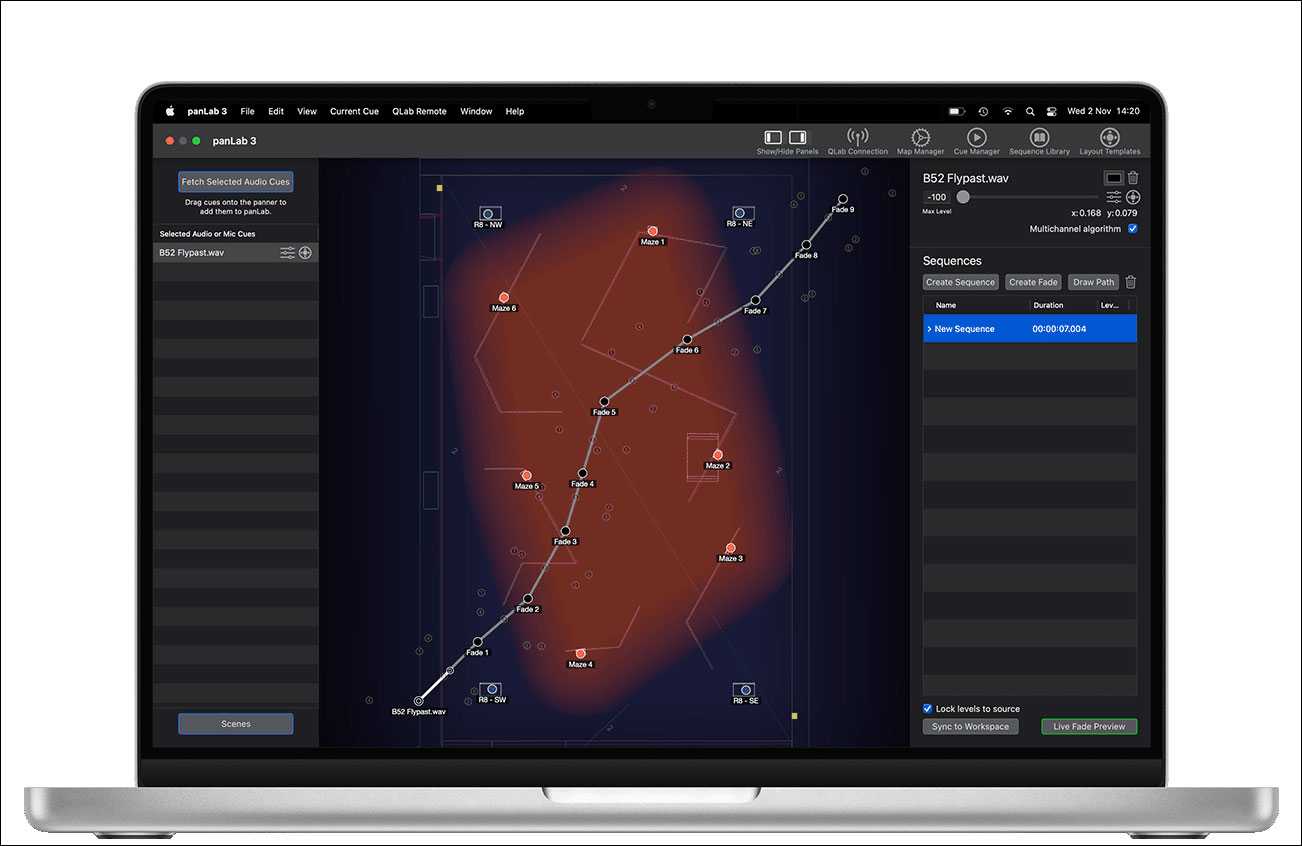panLab 3 app adds further features
- Details

Using panLab 3, users can intuitively mix QLab audio and mic cues by positioning them on a virtual map of their sound system. Using a bespoke algorithm designed exclusively for the software, panLab 3 takes care of much of the setup process required when configuring a spatial audio environment. As a result of this technological development, users should be up and running with panLab 3 in under five minutes.
panLab 3 can now seamlessly process multichannel audio inputs, with each channel of a multichannel audio file represented by its own position on the panner. This means it is now possible to render almost any multichannel audio format onto any custom loudspeaker layout. The new multichannel algorithm also allows users to easily adjust the width and angle of any multichannel audio file on the panner.
panLab 3 now offers the user granular control when pasting parameters from one cue to another, so it is possible to either completely match the position and output level parameters of a cue, or just paste certain characteristics from one cue to another.
It also adds support for QLab 5, whilst maintaining backwards compatibility with QLab 4 and now autosaves documents in the background and includes support for reverting to previously saved versions of the document.
“We used panLab 3 for mixing music and SFX stems in ‘Frameless’ Galleries The Art of Abstraction and Colour in Motion,” says sound designer and composer Nick Powell. “It is a hugely intuitive and creative tool, making the deployment of the composed music into the designed space a whole other layer of imaginative engagement with the project.”
“panLab has completely revolutionised the way I create work. The speed at which I can create complex audio sequences, from surround sound transitions to the placement of music stems, has made my workflow much simpler.”


















